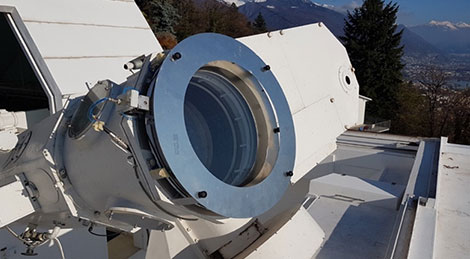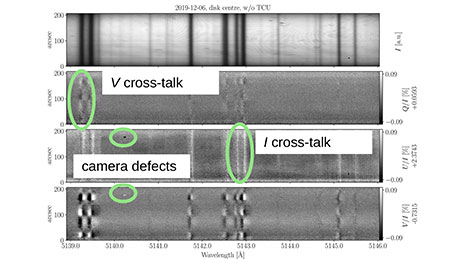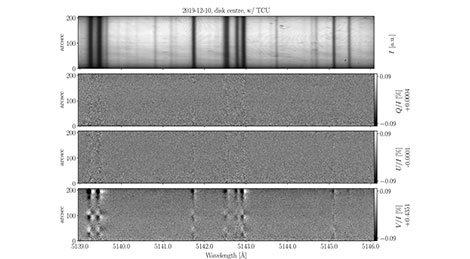Spectropolarimetry is the ultimate instrument to draw the most detailed picture of the solar atmosphere. The amount of detail attainable does then not only depend on the spatio-temporal and spectral resolution achievable by the telescope, in combination with the instruments, but also on the precision and accuracy of the polarimeter. The polarization of light is a delicate parameter, since any optical element may imprint spurious signatures to the measurements, which are sometimes hard to calibrate.
While the precision of polarimeters (understood as the ability to measure variations, limited essentially by photon noise) can reach a few ppm of the incoming intensity, the accuracy (the ability to measure the absolute polarization value or the absolute zero reference value) is usually not better than a few tenths of a percent. This discrepancy is caused by systematic errors induced by telescopes and instruments contaminating polarimetric measurements. For this reason, the optical path of the European Solar Telescope (EST) self-corrects for systematic errors by the mirrors, which are placed in such a way that the telescope polarization is automatically compensated, making EST the largest polarization-free solar telescope worldwide.
Still, besides the mirrors, other optical elements may prevent the achievement of high polarimetric accuracy and therefore the determination of the absolute level of polarization. The aim of a sub-work package within the SOLARNET project is to explore a novel technique which drastically reduces spurious instrumental effects to increase the accuracy of spectropolarimetric measurements. This technique has been previously applied successfully to measure the continuum polarization at the IRSOL telescope in Locarno, Switzerland. The IRSOL telescope is a Gregory-Coudé setup, which means that telescope polarization can be significant for certain times of the year. So it presents an ideal test case to explore the novel technique. The technique consists of a zero-order retarder film mounted on a rotation stage in front of the IRSOL telescope. This retarder film is slowly rotated and thereby adds an additional slow modulation to the fast modulation of the modulator and ZIMPOL, the high-precision polarimeter at IRSOL. This slowly rotating retarder system is called the Telescope Calibration Unit, or TCU for short (shown above). In particular, the systematic errors in spectrograph measurements reduced with the method are: telescope induced polarization, cross-talk induced by the telescope, background variation in spatial and spectral dimension, fringes introduced by the fluid-liquid-crystal based modulator, and some detector defects.
The choice of a zero-order retarder film conditions that polarimetric measurements at wavelengths apart from the design wavelength suffer from additional cross-talks. We showed that by combining measurements at pre-defined positions of the retarder, these cross-talks plus temporally stable systematic errors vanish for all wavelengths, so that in principle the method works independently of the wavelength. Despite this independency of the working principle, the efficiency of the correction method for the linear and circular polarization certainly depends on the wavelength. We showed that the efficiency for linear and circular polarization is only equal for two specific wavelengths, which means that firstly a collection of retarders at different design wavelengths are needed to cover a large wavelength range with high efficiency, and secondly choosing a suitable retarder dependent on the scientific question.
The study of the method at IRSOL reveals a significant increase in the absolute precision, the spectrograph measurements with and without TCU are shown in the figure below. We studied the method in the visible wavelength range, and consistently found that the absolute level of polarization improves by two orders of magnitude, which we tested at disk center, where the mean linear polarization level is expected to be zero. Additionally, cross-talks by the telescope and other systematic errors are significantly reduced. As a next step, this method will be tested at the currently largest European solar telescope, GREGOR on Tenerife, Spain.
Written by: Franziska Zeuner, IRSOL (Email: franziska.zeuner@irsol.usi.ch)



